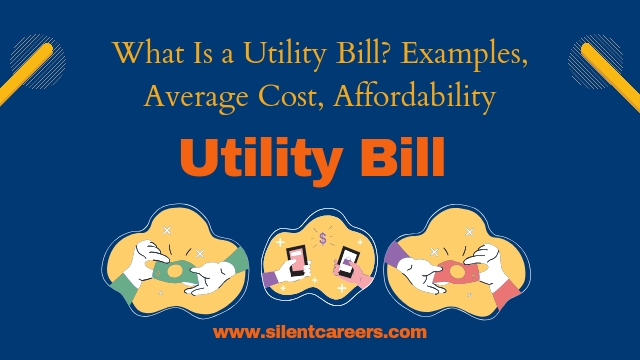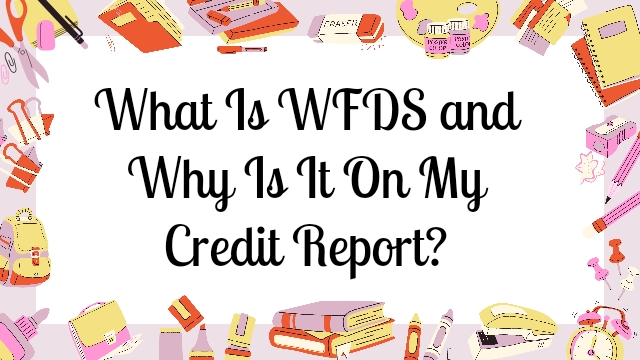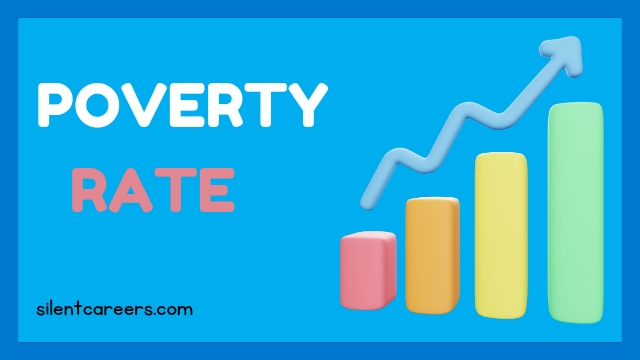
The FICO Score 9 is a credit scoring model introduced by FICO. It includes changes like reduced impact of medical debt, considers rental history, and better differentiates between types of collection accounts, aiming to enhance predictive accuracy.

What Is FICO credit score 9?
The FICO Score 9 is an updated version of the credit scoring model developed by FICO. This model includes several enhancements, such as:
- Medical Debt: It reduces the negative impact of medical debt on credit scores.
- Rental History: It incorporates rental payment history, which can benefit individuals with limited credit history.
- Collections: It differentiates between types of collection accounts, ignoring paid collections and placing less emphasis on unpaid medical collections.
These changes aim to provide a more accurate assessment of credit risk and help lenders make better-informed decisions.
Understanding FICO 9
Understanding FICO Score 9 involves recognizing its key features and improvements over previous models. Here are the main aspects:
- Reduced Impact of Medical Debt: FICO 9 lessens the negative influence of unpaid medical debt on credit scores, acknowledging that medical expenses can be unexpected and burdensome.
- Incorporation of Rental History: This version includes rental payment history in credit evaluations, which can be particularly beneficial for individuals who have a limited credit history but consistently pay their rent on time.
- Treatment of Collection Accounts: Paid collections are ignored, and unpaid medical collections have less impact compared to other types of collections. This approach helps in distinguishing between different types of debt more effectively.
- Improved Predictive Power: FICO 9 aims to offer more accurate risk assessments, enabling lenders to make better-informed lending decisions and potentially offer more favorable terms to borrowers.
By considering these factors, FICO 9 provides a more nuanced and comprehensive evaluation of an individual’s creditworthiness.
Read more: What Is a Credit-Builder Loan? How Does it Work?
What are the FICO® credit scoring factors?
FICO® credit scores are calculated based on five main factors, each contributing a different weight to the overall score. These factors are:
- Payment History (35%): This is the most significant factor and reflects whether you’ve paid past credit accounts on time. Late payments, defaults, and bankruptcies can negatively affect this component.
- Amounts Owed (30%): This factor looks at the total amount of credit and loans you are using compared to your total credit limit. It includes your credit utilization ratio, which is the percentage of available credit you are using. Lower utilization generally improves your score.
- Length of Credit History (15%): This measures how long your credit accounts have been established. A longer credit history can contribute positively to your score, as it provides more data on your borrowing behavior.
- Credit Mix (10%): This factor considers the variety of credit accounts you have, including credit cards, retail accounts, installment loans, finance company accounts, and mortgage loans. A diverse mix can be beneficial.
- New Credit (10%): This assesses the number of recently opened accounts and the number of hard inquiries made by lenders. Opening several new credit accounts in a short period can be seen as risky and may lower your score.
Understanding these factors can help you manage your credit more effectively and improve your FICO® credit score over time.
How to check your FICO® score?
You can check your FICO® score through several methods:
- Credit Card Issuers: Many credit card companies offer free access to your FICO® score as a cardholder benefit. Check your online account or monthly statements to see if this service is available.
- Credit Bureaus: You can purchase your FICO® score directly from the three major credit bureaus: Equifax, Experian, and TransUnion. They often provide this service alongside a copy of your credit report.
- FICO® Website: Visit myFICO.com, the official FICO® website, where you can purchase your score and access various credit monitoring services.
- Financial Institutions: Some banks and credit unions provide free access to your FICO® score if you have an account with them. Check with your financial institution to see if they offer this service.
- Credit Counseling Services: Some nonprofit credit counseling agencies offer free or low-cost credit reports and FICO® scores as part of their financial counseling services.
By regularly checking your FICO® score, you can monitor your credit health and take steps to improve or maintain it.
How to Access FICO 9 Credit Scores
To access your FICO 9 credit score, you can use several methods:
- Credit Bureaus: Request your FICO 9 score directly from the three major credit bureaus: Equifax, Experian, and TransUnion. Each bureau may offer this specific scoring model.
- Financial Institutions: Some banks and credit unions provide access to FICO 9 scores as part of their account services. Check with your bank to see if they offer this option.
- Credit Monitoring Services: Use credit monitoring services that specifically mention providing FICO 9 scores. Services like myFICO.com offer access to various FICO score versions, including FICO 9.
- Lenders: When applying for credit, some lenders use the FICO 9 model to evaluate applications. They may share your FICO 9 score as part of the application process.
- Third-Party Websites: Some third-party financial websites and apps provide access to FICO 9 scores as part of their credit monitoring tools.
Always verify that the service or institution explicitly offers the FICO 9 model to ensure you receive the correct version of your credit score.
How the FICO Score 9 is different
The FICO Score 9 model introduces several key differences and improvements over previous versions of the FICO scoring model:
- Reduced Impact of Medical Debt: Medical debt is treated more leniently in FICO Score 9. Unpaid medical collections have a smaller negative impact on the score compared to other types of debt.
- Incorporation of Rental History: FICO Score 9 includes rental payment history in the credit evaluation process, which can help individuals with a limited credit history who have consistently paid their rent on time.
- Treatment of Collection Accounts:
- Paid Collections: Paid collections are not considered in the FICO Score 9, which can lead to a higher score for individuals who have settled their collection accounts.
- Unpaid Collections: Unpaid medical collections are given less weight compared to other types of unpaid collections, reducing their negative impact on the score.
- Improved Predictive Power: FICO Score 9 has been designed to offer more accurate risk assessments, helping lenders make better-informed lending decisions. This can potentially result in more favorable terms for borrowers who have a lower risk of default.
Overall, these changes make FICO Score 9 a more refined and borrower-friendly credit scoring model, taking into account the nuances of different types of debt and payment histories.
When will lenders use it?
Lenders adopt FICO Score 9 at their own pace, depending on their internal policies and systems. While some lenders have already integrated it, others may continue using older models until they complete necessary updates and evaluations.
Where can I get FICO Score 9?
You can obtain your FICO Score 9 through several sources:
- Credit Bureaus: Request it directly from Equifax, Experian, or TransUnion.
- Financial Institutions: Some banks and credit unions offer it as part of their account services.
- myFICO Website: Purchase it from myFICO.com.
- Credit Monitoring Services: Choose services that specify providing FICO Score 9.
- Lenders: Some lenders provide it during the credit application process.
What it takes to get a good FICO score
To achieve a good FICO score, you should focus on the following key factors:
- Payment History: Consistently pay all your bills on time. Late payments, defaults, and bankruptcies can severely impact your score.
- Credit Utilization: Keep your credit card balances low relative to your credit limits. Aim to use less than 30% of your available credit.
- Length of Credit History: Maintain older accounts to show a long credit history. The longer your credit history, the better.
- Credit Mix: Have a variety of credit types, such as credit cards, installment loans, mortgages, and retail accounts. A diverse credit mix can positively impact your score.
- New Credit: Avoid opening multiple new credit accounts in a short period, as this can be seen as risky behavior. Multiple hard inquiries can lower your score.
- Regular Monitoring: Regularly check your credit report for errors and address any discrepancies promptly. This ensures your score accurately reflects your credit behavior.
By managing these factors effectively, you can improve and maintain a good FICO score.
How to Improve FICO 9 Credit Scores
To improve your FICO Score 9, focus on these strategies:
- Pay Bills on Time: Consistently make payments by their due dates to build a positive payment history.
- Reduce Credit Utilization: Aim to use less than 30% of your credit limit on credit cards. Paying off balances in full each month is ideal.
- Maintain a Long Credit History: Keep older credit accounts open to lengthen your credit history, which positively impacts your score.
- Diversify Your Credit Mix: If possible, have a variety of credit types, such as credit cards, installment loans, and retail accounts.
- Avoid New Hard Inquiries: Limit the number of new credit applications and hard inquiries. Multiple recent inquiries can negatively impact your score.
- Address and Remove Errors: Regularly review your credit report for inaccuracies and dispute any errors to ensure your credit report is accurate.
- Manage Debt Wisely: Pay off existing debts and avoid accumulating new ones, particularly high-interest debt, which can strain your finances.
- Consider Credit Counseling: If needed, seek advice from a credit counselor to develop a plan for managing and improving your credit.
By focusing on these areas, you can enhance your FICO Score 9 and overall credit health.
What FICO 9 Credit Scores Tell Lenders
FICO Score 9 provides lenders with a detailed picture of your creditworthiness, helping them assess the risk of lending to you. Here’s what it tells lenders:
- Credit Risk: The score indicates how likely you are to repay borrowed money. A higher score suggests lower risk, while a lower score suggests higher risk.
- Payment Behavior: It reflects your history of paying bills on time, including credit cards, loans, and other financial obligations.
- Credit Utilization: The score shows how much of your available credit you’re using. Lower credit utilization generally indicates responsible credit management.
- Debt Management: It provides insight into how well you manage your debt, including the types and amounts of credit you use.
- Credit History: The score includes information about the length of your credit history, showing how long you’ve been using credit and your experience with managing it.
- Collection Accounts: FICO Score 9 offers a refined view of your collection accounts, particularly reducing the impact of paid collections and unpaid medical debt.
Overall, FICO Score 9 helps lenders predict the likelihood of future credit behavior based on your past performance, aiding in more informed lending decisions.
Medical collections are treated differently than other collection types for FICO® Score 9
Yes, for FICO® Score 9, medical collections are treated differently compared to other types of collections. Here’s how:
- Reduced Impact of Medical Collections: Unpaid medical collections have a lesser impact on your credit score compared to other types of unpaid collections. This change acknowledges that medical debt is often unexpected and can be a significant financial burden.
- Paid Medical Collections: Once a medical collection is paid, it is removed from consideration in the FICO Score 9 model. This means that settling medical debt will not negatively impact your score.
- Differentiation from Non-Medical Collections: FICO Score 9 distinguishes between medical and non-medical collections. Non-medical collections, like those from credit cards or loans, continue to have a more substantial impact on your score, especially if they remain unpaid.
These adjustments aim to provide a more nuanced assessment of creditworthiness by accounting for the unique nature of medical debt.
Rent payments are included in FICO® Score 9 calculation
Yes, FICO® Score 9 includes rent payments in its calculation. This is a notable update from previous models:
- Rental Payment History: Rent payments are considered, which can be beneficial for individuals who have a solid history of paying their rent on time but may have a limited credit history otherwise.
- Enhanced Credit Profiles: Including rental payment data helps provide a more comprehensive view of an individual’s creditworthiness, potentially improving scores for those who consistently make timely rent payments.
- Broader Data Utilization: This inclusion aims to help lenders better assess the credit risk of borrowers who might not have extensive credit histories but demonstrate responsible financial behavior through their rental payments.
Overall, this change in FICO® Score 9 reflects an effort to capture a broader range of financial behaviors and provide a more accurate assessment of creditworthiness.
Paid collections no longer have a negative impact on FICO® Score 9 calculations
Yes, in FICO® Score 9, paid collections no longer have a negative impact on the credit score. Here’s how it works:
- Removal of Paid Collections: Once a collection account is paid, it is excluded from the FICO® Score 9 calculation. This means that paying off a collection account will not lower your score.
- Focus on Active Debts: The score focuses more on current and unpaid debts rather than on accounts that have been settled, which helps reflect your current creditworthiness more accurately.
- Improved Credit Assessment: This change is intended to provide a more positive view of individuals who have taken steps to resolve their outstanding debts, acknowledging their efforts to improve their financial situation.
By eliminating the impact of paid collections, FICO® Score 9 offers a more forgiving and nuanced assessment of creditworthiness.
FICO® Score 8 is the most used credit score model by lenders
Yes, FICO® Score 8 is widely used by lenders and is one of the most common credit scoring models. It was introduced in 2009 and is popular due to its broad adoption across the credit industry. Here’s why it’s frequently used:
- Established Track Record: FICO® Score 8 has been in use for many years, making it a well-established and trusted model among lenders.
- Comprehensive Evaluation: It evaluates credit risk based on key factors like payment history, credit utilization, length of credit history, credit mix, and new credit.
- Compatibility: Many lenders’ systems and practices are already set up to use FICO® Score 8, making it a default choice for many credit decisions.
While FICO® Score 8 remains widely used, some lenders are beginning to adopt newer models like FICO® Score 9 for their advanced features and updates.
Which credit score version do lenders use?
Lenders may use various versions of credit scores, depending on their needs and preferences. The most common versions include:
- FICO® Score 8: Widely used by many lenders for general credit assessments. It provides a broad evaluation of credit risk and is well-established.
- FICO® Score 9: Some lenders use this newer model, which includes updates like reduced impact of medical debt and inclusion of rental payment history.
- FICO® Score 10 and 10T: These newer models, released in 2020, offer additional predictive power by incorporating trended data (credit usage over time) and are used by some lenders for more nuanced risk assessment.
- VantageScore 3.0 and 4.0: Another scoring model used by some lenders, developed by the three major credit bureaus (Equifax, Experian, and TransUnion). VantageScore 4.0, for instance, includes trended data and is designed to be more inclusive of different credit profiles.
Lenders choose the version based on their requirements, the specific needs of their credit assessments, and their existing systems.
How can I improve my credit score?
Improving your credit score involves several key strategies:
- Pay Bills on Time: Timely payments are crucial. Set up reminders or automatic payments to ensure you never miss a due date.
- Reduce Credit Utilization: Keep your credit card balances low relative to your credit limits. Aim to use less than 30% of your available credit.
- Maintain a Long Credit History: Keep older accounts open to lengthen your credit history, as this positively impacts your score.
- Diversify Your Credit Mix: If possible, have a mix of credit types, such as credit cards, installment loans, and retail accounts.
- Avoid Opening Multiple New Accounts: Each new credit application can result in a hard inquiry, which may temporarily lower your score. Apply for credit only when necessary.
- Check Your Credit Report for Errors: Regularly review your credit reports from the major bureaus (Equifax, Experian, and TransUnion) and dispute any inaccuracies to ensure your score reflects your true credit behavior.
- Manage Debt Wisely: Pay off existing debt and avoid accumulating new high-interest debt. Consider debt consolidation if you have multiple debts.
- Use Credit Responsibly: Avoid carrying high balances and try to pay off credit card balances in full each month.
- Consider Credit Counseling: If needed, seek advice from a credit counselor to develop a plan for managing and improving your credit.
Implementing these practices consistently can help enhance your credit score over time.








